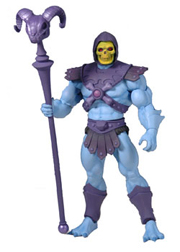 For Mattel, the Internet isn’t just a playground for cultivating direct sales. It’s a toy box full of wondrous ways to engage potential customers at just the right time in the buying cycle.
For Mattel, the Internet isn’t just a playground for cultivating direct sales. It’s a toy box full of wondrous ways to engage potential customers at just the right time in the buying cycle.
“We’re ramping up improving our conversations with the consumer,” says Mike Young, director of ecommerce for Mattel. “We’re a little behind the curve on this, and we know we need to be talking with the consumer in more of a 360/personal view.”
Young oversees five of Mattel’s six sites—MattelShop.com, Fisher-Price.com, MattyCollector.com, BarbieCollector.com and HotWheelsCollectors.com. (AmericanGirl.com, Mattel’s largest ecommerce site, is run separately.)
The sites target different segments of the toy-buying population. As the names imply, the collector sites cater to serious aficionados of those brands. The Barbie site offers exclusive products, while Hot Wheels serves as a place for collectors to connect and trade cars. MattyCollector offers action figures of icons like DC Comics superheroes and Masters of the Universe characters. Over half of the Matty site’s business is subscription based; many of the other products sell out on the day they debut.
The Fisher-Price site of preschool/toddler toys like Little People and Imaginext is supported by a print catalog, while MattelShop features all the company’s core brands, as well as licensed products based on Mattel properties.
 But the main goal of those last two sites isn’t necessarily to generate revenue. “MattelShop is just a blip on our revenue screen worldwide,” says Young, noting that, to avoid channel conflict with retailers, the site doesn’t compete on price. Rather, the site serves primarily to support sales and marketing. “Most of our conversation within the company surrounds supporting the B2B trade.”
But the main goal of those last two sites isn’t necessarily to generate revenue. “MattelShop is just a blip on our revenue screen worldwide,” says Young, noting that, to avoid channel conflict with retailers, the site doesn’t compete on price. Rather, the site serves primarily to support sales and marketing. “Most of our conversation within the company surrounds supporting the B2B trade.”
But that’s changing a bit, as the company is beginning to look at how it can communicate more effectively with the end consumer online to build relationships with those toy-buying mamas, papas and collectors—and hopefully influence their buying decisions along the way.
Figuring out the reason for this increased need to communicate is simple child’s play: The web influences two-thirds of toy-buying decisions, as shoppers increasingly search not only manufacturers’ sites but retailer sites, search engines, video sharing sites and social media networks to figure out what to purchase.
“People search five or more sites when making a purchasing decision,” says Young, who spoke at eTail Boston. “TV reaches children—but they’re not making the buying decisions.”
Online purchasing research is more fact-based, he says. There’s a “path of motivation”—toy buyers have a need; they then identify the best sources to satisfy that need; then they narrow those down; and then they select the best value before making a purchase. There are many things to consider, including age and/or gender appropriateness, educational value, price, shipping and how comfortable a buyer is with a website.
Of course, considering that the majority of purchases of Mattel products are made through retail partners, it can be difficult to corroborate purchase intent all the way through to conversion. But survey results and other analyses have shown that visitors to MattelShop are up to 30% more likely to buy.
The site also gives Mattel a way to test products as well as marketing approaches. In a site usability study, images of children alongside products were extremely influential—in both positive and negative ways. If the child depicted looked too young, but the item was also suitable for an older child, the potential audience was cut down. The site also gives Mattel a place to house landing pages for offline campaigns, such as infomercials.
 Network
Network

